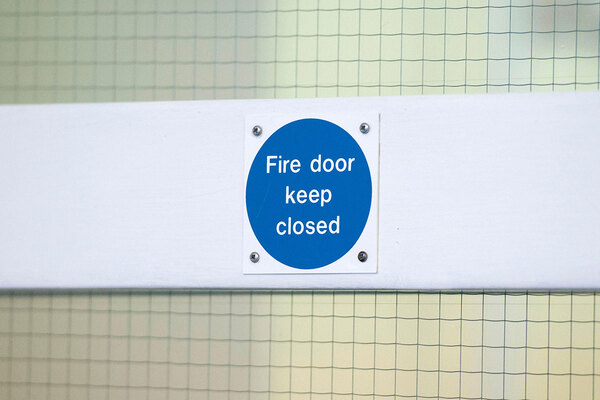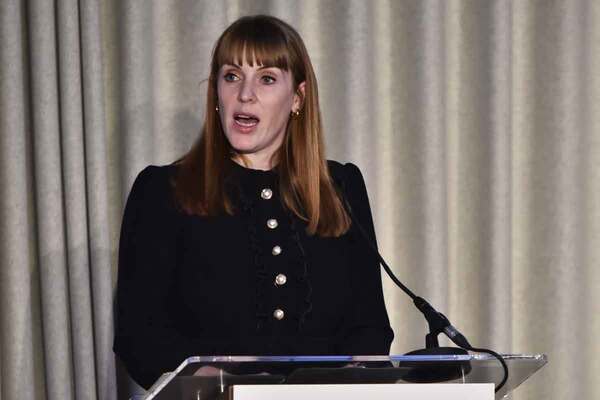Replacing fire doors: a strategy
Birmingham Council joined with Shelforce to replace thousands of fire doors. Inside Housing finds out about their partnership

In association with:

Shelforce/Birmingham City Council
When Birmingham City Council embarked on a programme to replace 30,000 entrance doors to flats in its higher-risk buildings, it turned to its manufacturer and supplier of choice, Shelforce, for a fire door solution that complied to the highest standards.
The timing was apt. Howard Trotter, business manager at Shelforce – which specialises in supplying windows, doors and fire doors for local authority building projects – had recently developed a fire door in conjunction with Winkhaus, a company that develops and produces system solutions for windows and doors.
Mr Trotter describes the design and manufacturing process of the new fire door as “forensic in nature”. Because of new regulations, it had to be. Third-party auditing and certification is now a legal requirement for new fire doors in high-rise buildings, to verify that all companies and individuals involved in their creation, installation and maintenance are competent to do so.
“It’s crucial to understand how the legislation has changed around fire doors,” says Mr Trotter. “We are legally responsible for the manufacture of the fire doors. So if the worst happened, heaven forbid, and there was a failure and somebody died within a block of flats with one of our fire doors, I am accountable. I am the responsible person.” In the same way, if there had been a fatality because of a faulty installation, the installer would be legally accountable.
Birmingham was quick to start the replacement programme, notes Mr Trotter: Shelforce began manufacturing doors for the project in 2020-21 and, to date, 10,584 have been installed. “But then [the council] had the benefit of having a fully compliant door that they trusted completely because of [the work] we’d done with Winkhaus,” he says. “The test evidence was there for everyone to see.”
This is a key point, Mr Trotter explains, because, as a manufacturer, Shelforce is legally required to provide test evidence to demonstrate its fire door’s ability to resist fire. The document that collates the latest fire door test evidence is known as the Field of Application – and all fire doors that are installed must have this from the manufacturer. Without it, a building may end up with non-compliant doors being fitted.
Field of Application
“[The Field of Application] tells you all the components that you can use [to make the fire door], and you can only use those components,” Mr Trotter says. “It’s supported by hundreds of tests on fire doors of all different widths, sizes and heights… When you work from the Field of Application, you can manufacture any door, any width, any size.” Each of the doors has a small yellow peg inserted into it which features a unique number demonstrating Shelforce’s compliance credentials and data about the doorset.
Before the doors can be installed, Shelforce gives mandatory fire door installation toolbox training to all its installation partners. “Every installer has to come to Shelforce – before they can even touch a door on site – to go through our installation guide,” says Mr Trotter. Afterwards, a document that includes the names of the installers, the date of their training and signatures is sent to the main contractor. Both a hard copy and an electronic version are available.
Photographic evidence of the installation process is also required. “[Installers] have to show step by step every part of the installation of the fire door, and hold that evidence on file [as part of] the golden thread,” says Mr Trotter. “So if anything did go wrong, they can prove that when they left that door it was 100% right.”
30,000
Entrance doors Birmingham City Council wanted to replace
10,500
Replacement doors which have been installed since 2020-21
Under new regulations for multi-occupied residential buildings in England over 11 metres in height, quarterly checks of all fire doors (including self-closing devices) in common areas must be carried out, and annual checks of all flat entrance doors (including self-closing devices) that lead onto a building’s common areas. When it comes to maintenance, Shelforce provides toolbox training to all building safety officers at Birmingham City Council. “So they know exactly what they’re looking for when they look at a fire door,” explains Mr Trotter. “They’ll know if a letter plate looks out of place, they’ll know if a spy hole is not right… they’ll know everything. They’ve also been shown how to check a door to see if it’s been fitted correctly [and] what the gap should be around the door.” Unqualified tradespeople are prohibited from carrying out maintenance.
Going forward, Mr Trotter believes that all parties need to have a much better understanding of the Field of Application, plus the legislation surrounding fire door responsibility and accountability. If this means that manufacturers, installers and maintenance tradespeople now have more hoops to jump through, then so be it, he says. “It’s reassurance. Ultimately, the question is about safety and would you be happy with your family behind that door?”
“Certification verifies that the individuals completing each stage of the life cycle are capable of doing so”
Fire doors are vital for any building, as they form a protective barrier to fire and smoke spread, while also providing a suitable means of escape. But legislation around them has changed significantly in recent years. Fire doors should be supplied as a fully pre-assembled doorset, inclusive of a leaf, frame, associated hardware/door furniture and intumescent/smoke seals fitted.
One of the most important changes – set out in the Building Safety Act – is the introduction of the golden thread of data: consistently updated digital records which apply to all higher-risk residential buildings, so that their original design intent is preserved, that changes can be managed through a formal review process and the data for the life cycle is visible to responsible person(s) and tenants.
There are five steps in the life cycle of compliance for a fire doorset: design and test; specify; manufacturing; installation; and maintenance post-inspection/planned annual inspection. Design and test is also the reference point for other stages to ensure the original design intent is preserved. For social housing, all stages in its life cycle need to be included and reviewed to ensure compliance with the new legislation.
Another key factor for compliance is third-party certification and accreditation. For responsible persons and tenants, this verifies that the companies and individuals completing each stage of the life cycle are capable of doing so, and that they are working to – and maintaining – the original design and test data.
If a fire doorset has a damaged piece of glazing, the maintenance team will need to have received product training and understand how the doorset was constructed. They should have detailed knowledge of each component and must be able to replace them like for like. This will ensure the fire doorset remains compliant and its performance is maintained.
Over the past decade, the Winkhaus UK technical team – and our third-party certified partner companies – have been involved in the creation and implementation of the latest standards and guidance for fire doorsets. The following case study is a good example of how to implement a compliant fire doorset specification and strategy, referencing and maintaining the original design and test evidence as the golden thread throughout its life cycle.
Sign up for our fire safety newsletter
Already have an account? Click here to manage your newsletters











